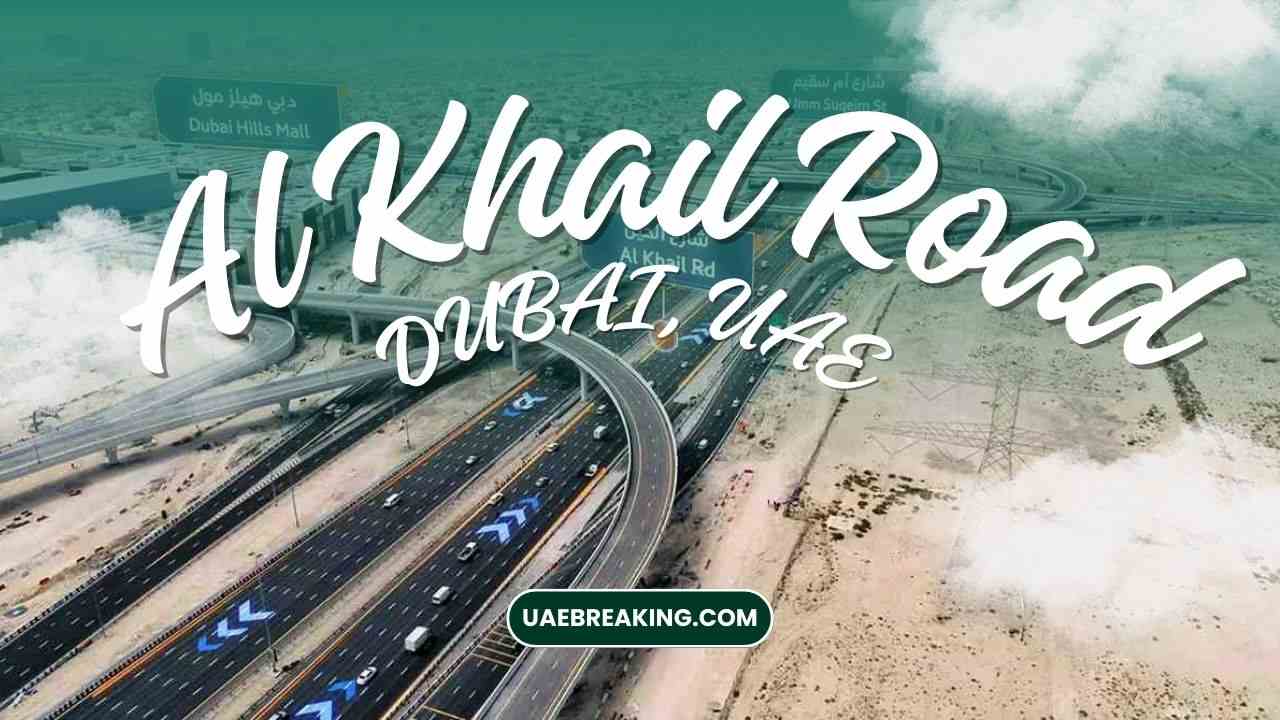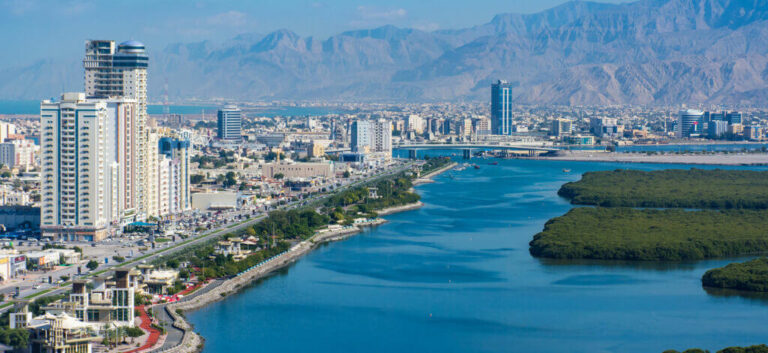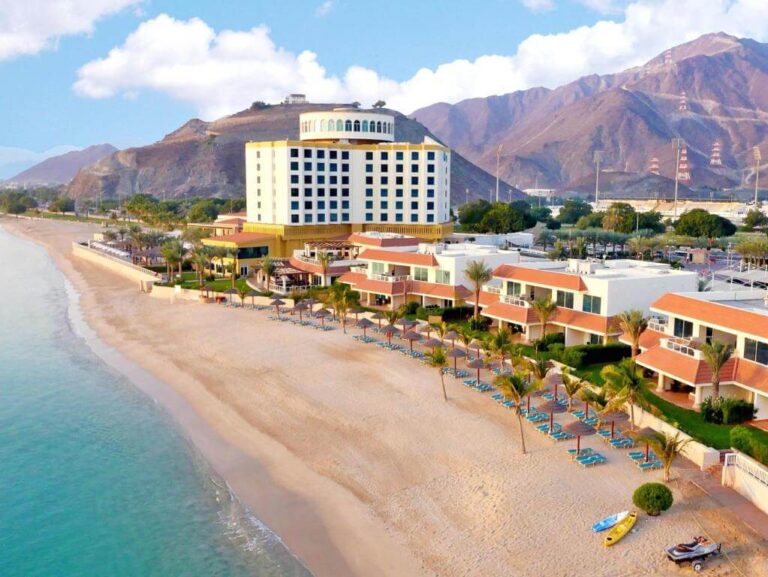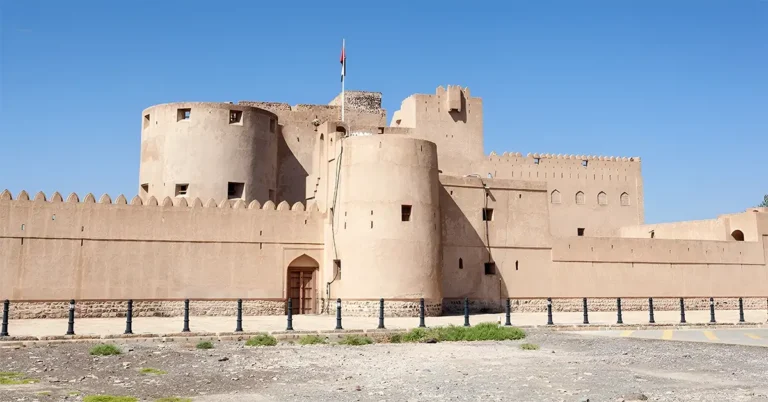Al Khail Road, Dubai, UAE
A Highway That Transformed Dubai’s Connectivity
If Sheikh Zayed Road is Dubai’s glamorous showcase, Al Khail Road (E44) is its hardworking backbone. Spanning across the city and linking major districts, Al Khail Road has quietly but powerfully shaped Dubai’s urban growth. Once considered a secondary route to the busier Sheikh Zayed Road, it has now become a vital artery that supports the city’s economic engine, real estate boom, and daily commute.
What makes Al Khail Road fascinating is not just its scale or speed limits but its role in redefining mobility in one of the world’s fastest-growing cities. Today, it connects industrial hubs with luxury residential communities, bridges downtown districts with emerging suburbs, and serves as a lifeline for both local residents and cross-emirate travelers.
The Strategic Importance of Al Khail Road
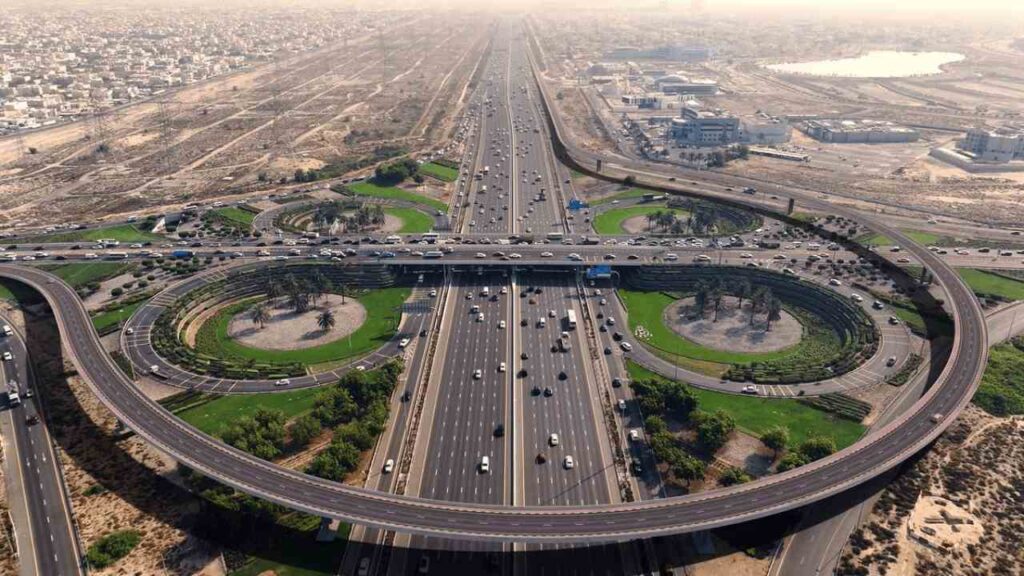
Dubai’s rapid growth demanded more than a single highway, and Al Khail Road rose to the challenge. Built parallel to Sheikh Zayed Road, it stretches from Business Bay and Al Jaddaf in central Dubai all the way towards Sharjah and the Northern Emirates, while also linking directly to Al Ain Road and Dubai–Al Ain Expressway.
This strategic alignment means Al Khail Road serves as:
- A trade corridor connecting free zones, warehouses, and logistics hubs.
- A commuter’s lifeline easing pressure on Sheikh Zayed Road.
- A real estate catalyst unlocking development in areas like Meydan, Dubai Hills Estate, and Jumeirah Village Circle.
In essence, Al Khail Road functions like Dubai’s “hidden spine”—it may not always grab the spotlight, but it carries the city forward.
A Brief History of Al Khail Road
When first constructed, Al Khail Road was a relatively modest dual carriageway intended to support industrial access routes. But Dubai’s expansion in the early 2000s demanded upgrades. The Roads and Transport Authority (RTA) undertook massive expansions, transforming Al Khail Road into a multi-lane superhighway with up to six lanes in each direction.
Key milestones include:
- 2012–2015 Upgrades: Flyovers, underpasses, and interchanges introduced to replace roundabouts.
- Link to Meydan & Business Bay: Providing smooth access to Downtown Dubai and new luxury developments.
- Integration with Al Ain and Emirates Road: Strengthening regional connectivity.
This evolution cemented Al Khail Road’s role as more than just an alternative route—it became a central force in Dubai’s transport master plan.
Al Khail Road Today: Features and Infrastructure
Driving along Al Khail Road today reveals a masterclass in modern infrastructure. Wide, multi-lane highways allow high-capacity traffic flow, while its interchanges reflect advanced urban planning.
Key Features:
- Six to Eight Lanes: Designed for heavy volumes of commuters, cargo, and inter-emirate travel.
- Major Interchanges: Seamless links with Sheikh Mohammed bin Zayed Road, Emirates Road, and Al Ain Road.
- Access to Communities: Entrances to Dubai Hills Estate, Jumeirah Village Circle, Business Bay, and more.
- Speed and Efficiency: Designed for speeds of up to 100–120 km/h, making it one of the fastest ways across the city.
Architectural and Urban Touches
While primarily functional, Al Khail Road reflects Dubai’s design ethos—sleek, efficient, and forward-looking. Landscaped medians, improved signage, and sound barriers in residential stretches show how functionality and urban aesthetics converge.
Al Khail Road and Real Estate Development
If you want to understand how roads shape cities, Al Khail Road is a perfect example. Its expansion coincided with Dubai’s push to build new communities outside the city core.
Areas Transformed by Al Khail Road:
- Dubai Hills Estate: A green master community that thrives on Al Khail connectivity.
- Meydan City: Home to Meydan Racecourse and ambitious residential developments.
- Business Bay & Downtown Dubai: Direct access makes these districts highly desirable for professionals.
- Jumeirah Village Circle & Jumeirah Village Triangle: Affordable communities brought closer to the city center.
Developers actively marketed “easy Al Khail Road access” as a selling point, reflecting how infrastructure drives lifestyle choices and property values.
Economic and Social Role of Al Khail Road
Beyond real estate, Al Khail Road fuels commerce, logistics, and social life in Dubai.
- Economic Role: Facilitates goods movement between warehouses, free zones, and ports.
- Workforce Mobility: Connects residential neighborhoods with employment hubs.
- Social Integration: Makes family outings, weekend travel, and cross-city visits smoother.
This dual role—as both an economic corridor and social connector—makes Al Khail Road indispensable in everyday Dubai life.
Daily Commute: Life on Al Khail Road
Ask a Dubai resident about Al Khail Road, and chances are they’ll describe it as a love-hate relationship.
- The Love: Wide lanes, quick travel times, and well-planned exits.
- The Hate: Rush hour bottlenecks, especially near Business Bay and Dubai Hills interchanges.
Yet compared to the congestion of Sheikh Zayed Road, Al Khail often feels like a relief valve, saving commuters valuable time.
The Future of Al Khail Road
Dubai never stops innovating, and Al Khail Road is no exception.
- RTA Expansion Projects: More lanes and smarter traffic management.
- Smart Mobility Integration: AI-driven traffic signals and connected vehicle systems on the horizon.
- Metro and Public Transport Links: Plans to integrate future metro extensions with Al Khail catchment areas.
As Dubai pushes towards its 2040 Urban Master Plan, Al Khail Road will play a crucial role in sustainable mobility and regional integration.
Al Khail Road vs. Sheikh Zayed Road
While often compared, the two roads serve different yet complementary purposes.
- Sheikh Zayed Road: Dubai’s business and lifestyle showcase.
- Al Khail Road: The efficient commuter and logistics powerhouse.
Together, they represent Dubai’s dual character—a city of glamour and grit, spectacle and substance.
Cultural Symbolism of Al Khail Road
Interestingly, Al Khail Road is more than concrete and asphalt. For many residents, it symbolizes:
- Accessibility: Opening doors to new homes and opportunities.
- Ambition: A city determined to keep moving forward.
- Balance: Between central urban zones and growing suburbs.
In a way, Al Khail embodies the UAE spirit—efficient, practical, and future-focused.
FAQs About Al Khail Road, Dubai
1. What is the length of Al Khail Road?
Al Khail Road (E44) spans over 60 km, stretching from Business Bay to Sharjah, with interlinks to multiple highways.
2. Is Al Khail Road faster than Sheikh Zayed Road?
In many cases, yes. While Sheikh Zayed Road is often congested, Al Khail offers smoother traffic flow, especially for commuters heading to suburban communities.
3. Which areas are best connected via Al Khail Road?
Major areas include Business Bay, Downtown Dubai, Meydan, Dubai Hills Estate, Jumeirah Village Circle, and Dubai Silicon Oasis.
4. Why is Al Khail Road important for real estate?
Proximity to Al Khail Road boosts property value and appeal, as it ensures residents can access business districts, schools, and leisure hubs quickly.
5. Are there future metro stations planned along Al Khail Road?
Yes. Dubai’s urban master plan includes future metro expansions that may align with Al Khail Road to support sustainable transport.
Final Thoughts
Al Khail Road may not boast the skyscraper-studded glamour of Sheikh Zayed Road, but its impact on Dubai’s mobility, economy, and lifestyle is undeniable. It is the city’s unsung hero—an engine of growth, a connector of communities, and a symbol of Dubai’s ability to balance ambition with practicality.
For readers of UAEbreaking.com, Al Khail Road isn’t just another highway—it’s a reminder that infrastructure builds more than cities; it builds futures.
- Dinner in the Sky, Dubai, UAE - September 8, 2025
- Palm Jumeirah, Dubai, UAE - September 4, 2025
- From Desert Creek to World-Famous Waterfront: The Unstoppable Rise of Dubai Marina - September 3, 2025

